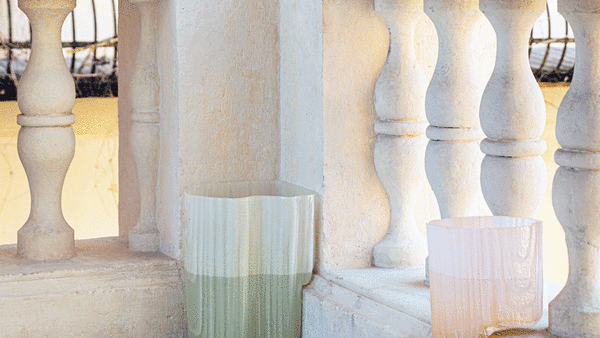

The fairy tale castle that Alice Stori Liechtenstein and her family inhabit in the hilly countryside of southern Austria is far from the hotbeds of contemporary design — distant both geographically (it’s a six-hour drive from Milan, for example) and stylistically (built in medieval times, with later Baroque and Rococo additions).
But every May, Schloss Hollenegg, as the castle is called, draws design aficionados when the doors are thrown open for a group show of new work revolving around a theme of Liechtenstein’s choosing. This year’s exhibition, called “Ashes and Sand,” is devoted to glass and named for the two materials needed to make it.
The exploration of glass began last summer, with a three-week residency for a handful of current and recent design students. The lucky young creators, who lived on the premises for the duration, were encouraged to wander the castle’s halls, poke through its 52 rooms and take inspiration wherever they found it.
“It’s a bit like summer camp,” said Liechtenstein, 44, a curator who has run the design residency programme for seven years.
But the participants worked hard, too. By the time the residency concluded, they had in hand precise sketches for designs, and — thanks to Liechtenstein’s connections — contacts for production partners to help them realise their plans. While the wares were being made, Liechtenstein commissioned pieces from other designers to round out the show, which she co-curated with Rainald Franz, glass and ceramic expert at Vienna’s Museum of Applied Arts.
Some works in the show incorporate recycled glass, reflecting current concerns about sustainability.
Some grew out of research into historical glass techniques: Lenn Gerlach, a German designer, delved into green glass made for centuries by artisans in the Black Forest before conceiving of his variously shaped green vessels, whose speckles result from the area’s soft red sandstone.
Designers pushed traditional glassblowing techniques in new directions, such as to make furnishings commonly constructed of sturdier materials: Philipp Weber, a German designer, created a curvy silver side table, while Tamara Barrage, a Lebanese designer based in Dubai, United Arab Emirates, who was in residence last summer, conjured up a statuesque candelabra.
Of-the-moment technology also came into play. Julia Körner, an Austrian architect, conceived fluted vessels that were 3D-printed by Swarovski, the crystal maker. Barry Llewellyn, an Irish designer based in the Netherlands, created mirrors rigged with solar panels and LEDs so that they charge during the day and light up at night.
Works by the designers in residence will remain at Schloss Hollenegg, alongside centuries-old castle furnishings including Flemish tapestries, stoves made of ceramic tiles and gilt-framed ancestral portraits. The castle has been in the family of Liechtenstein’s husband for two centuries.
“Every generation has added something,” she said. Her own efforts to incorporate 21st-century designs help “keep the place alive,” she added.
Preparations for the 2023-24 session — to be devoted to wood — are in progress. “Ashes and Sand” is on view through May 28.
— NYT
Oman Observer is now on the WhatsApp channel. Click here


